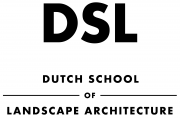Landscape architecture Delphi study
Adri van den Brink, Fiona Morris, together with J.V. Meijering (first author), H. Tobi and D. Bruns published the paper ‘Exploring research priorities in landscape architecture: An international Delphi study’ in ‘Landscape and Urban Planning’. The online version can be found through this link. The printed version will be released in May 2015.
Highlights
- This study lays the foundation for a future landscape architecture research agenda.
- Research into ‘human dimensions’ and ‘built environments’ is most demanded.
- Both domains are considered important for academia and useful for practice.
- Differences between experts from different continents were identified.
- The specifics of the research agenda may require regional adaptations.
Landscape architecture experts prioritise domains
Many of the world’s major challenges require responses that are embedded in landscape planning, design, and management. To date, however, it is unclear which research domains should form the core of a future landscape architecture research agenda. This study explored which domains landscape architecture experts prioritise as most important for landscape architecture as a research discipline and which domains they prioritise as most useful for landscape architecture practice.
A Delphi study was conducted with an international sample of landscape architecture experts from academia and professional practice. Results suggest that research into ‘human dimensions of planning and design’ and ‘built environments and infrastructure’ is desirable from an academic and practice-oriented view. Additionally, the domains ‘global landscape issues’ and ‘green urban development’ seem to be important for landscape architecture as a research discipline. These four domains could thus form the core of a future research agenda.
Research agenda
Some differences appeared to exist between academic and professional experts as well as between experts from different continents. This suggests that a future research agenda should allow for refinements according to specific regional needs. For the first time, landscape architecture is now in possession of a foundation upon which a fascinating research agenda may be built.
Additionally, pertinent discussions are expected to contribute to the continuing maturation of landscape architecture as a discipline that does not only rely on other established research disciplines, but also builds its own body of knowledge.
More information: Wageningen University Landscape Architecture Group.
